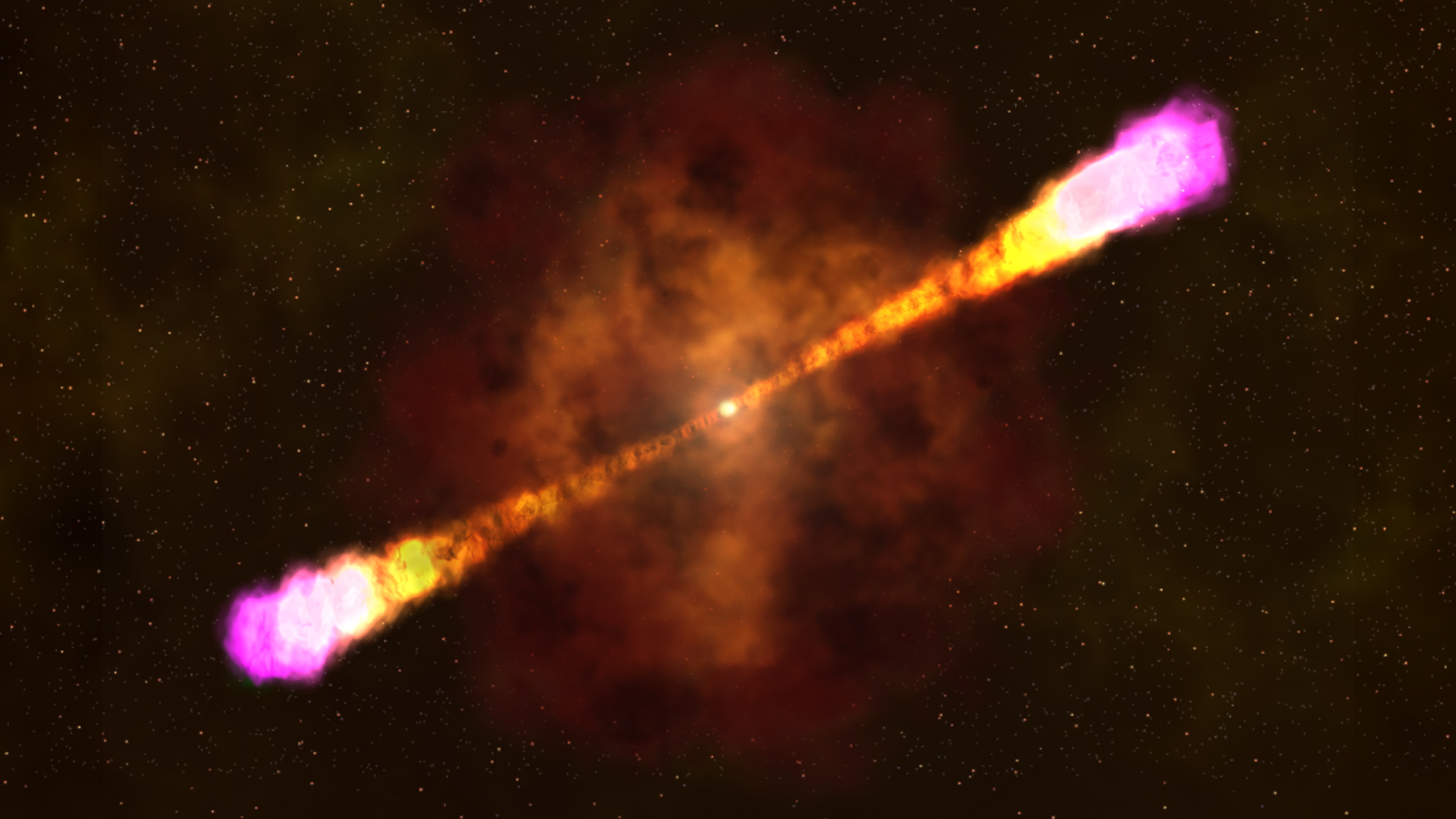WASHINGTON — Astronomers call it the monster. It was the biggest and brightest cosmic explosion ever witnessed. Had it been closer, Earth would have been toast.
Because the blast was 3.7 billion light-years away, mankind was spared. But orbiting telescopes got the fireworks show of a lifetime in April.
The only bigger display astronomers know of was the Big Bang that created the universe, and no one was around to see that.
What happened was a gamma ray burst, an explosion that happens when a massive star dies, collapses into a brand-new black hole, creates a supernova and ejects energetic radiation that is as bright as can be as it travels across the universe at the speed of light.
NASA telescopes in orbit have been seeing these types of bursts for more than two decades, spotting one every couple of days. But this one was special. It set records, according to four studies published Thursday in the journal Science.
It flooded NASA instruments with five times the energy as its nearest competitor, a blast in 1999, said University of Alabama at Huntsville astrophysicist Rob Preece, author of one of the studies.
It started with a star that has 20 to 30 times the mass of our sun, but is only a couple of times bigger in width, so it is incredibly dense. It exploded in a certain violent way.
In general, gamma ray bursts are “the most titanic explosions in the universe,” and the one witnessed last spring was so big some of the telescope instruments hit their peak, Preece said. It was far stronger and lasted longer than previous ones.
“I call it the monster,” Preece said. And he wasn’t alone. One of the other studies, not written by Preece, used the word “monster” in its title, unusual language for a scientific report.
One of the main reasons this was so bright was that relative to the thousands of other gamma ray bursts astronomers have seen, the monster was pretty close, even at 3.7 billion light-years. A light-year is almost 6 trillion miles.
Most of the bursts NASA telescopes have seen have been twice as distant as this one. Other explosions could be this big, but are so much farther away, they don’t seem so bright when they get to Earth, the studies’ authors say.
Astronomers say it’s incredibly unlikely that a gamma ray burst — especially a big one like this — could go off in our galaxy, near us. Harvard’s Avi Loeb, who wasn’t part of the studies, put the odds at at least 1 in 10 million.
Also, a burst has to be pointing at you to be seen and to be dangerous.



